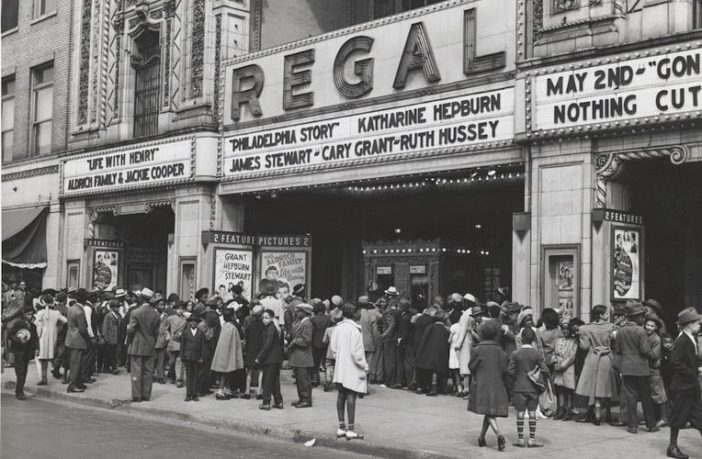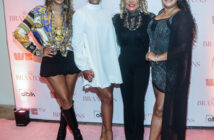Black folks have a long history of not only creating dynamic and vibrant businesses but entire business districts, all while surrounded by the ever-present threat and promise of white domestic terrorism.
Most of us are familiar with Black Wall Street. But to those in the know, when you mention Black Wall Street, they’ll ask, “Which one?” And they will then probably run down a list similar to the one offered here, to show you just a sampling of our business ownership legacy in these so-called United States.
This legacy of Black business excellence is a shining example of all seven of the Kwanzaa principles in action: Unity (Umoja), Self-determination (Kujichagulia), Collective Work and Responsibility (Ujima), Cooperative Economics (Ujamaa), Purpose (Nia), Creativity (Kuumba), and Faith (Imani).
National Historic Black Business Districts
When segregation was the law of the land, centers of thriving, bustling Black-owned businesses were a common sight in many U.S. cities. Here are just a few:
Greenwood Section of Tulsa, Oklahoma
Black Wall Street. Picture of band marching on Greenwood Avenue. Courtesy Greenwood Cultural Center
Known as both “Little Africa” and “Black Wall Street,” the Greenwood section of Tulsa was one of the most successful and wealthiest Black communities in the country, which is saying something. Because there were many such communities that did quite well before state-sanctioned white domestic terrorism thwarted Blacks’ attempts to create generational wealth by destroying businesses, killing thousands, stealing land and institutions, and more. The Tulsa Race Riot of 1921 was one such example of this wanton white violence mislabeled a “riot.”
Jackson Ward, Richmond, Virginia
 The 400 block of E. Marshall Street, in Jackson Ward in Richmond, Va circa 1955. Photo courtesy of the Valentine
The 400 block of E. Marshall Street, in Jackson Ward in Richmond, Va circa 1955. Photo courtesy of the Valentine
After the Civil War, the center for Black commerce in Richmond was the section of town known as the Jackson Ward.
The Hayti District of Durham, North Carolina
 Biltmore Hotel in Hayti, Durham, NC. Courtesy Hayti Heritage Center
Biltmore Hotel in Hayti, Durham, NC. Courtesy Hayti Heritage Center
Because the successful Haitian Revolution of the late 1790s and early 1800s inspired Blacks across the U.S. during and after slavery, several Black communities nationwide named sections of their towns after the island nation, even if they altered the spelling a little, like the Hayti District of Durham. This thriving Black business district was home to the North Carolina Life Insurance Company and the Mechanics & Farmers Bank, two powerhouse Black businesses located on Parish Street. This community was also known as “Black Wall Street.”
The Greater U Street District of Washington, D.C.
For half a century (1900 – 1950) Black-owned businesses in the nation’s capital made their home in D.C.’s U Street area. For example, the Lincoln Center, a first-run entertainment house for Blackfolk served as one of the area’s shining star businesses.
Bronzeville, Chicago, Illinois
 Bronzeville, Chicago’s thriving Black business hub. Courtesy uchicago.edu.
Bronzeville, Chicago’s thriving Black business hub. Courtesy uchicago.edu.
This bustling Black metropolis located within the Windy City was said to be the place where Blackfolk interested in “stylin’ & profilin’” or just conducting business did their thing.
The Ville, St. Louis, Missouri
During the 1920s, this spot, the Ville in St. Louis, was viewed as the center of Black business and culture and boasted an “elite” community of Black professionals and entrepreneurs. Included in that group was Annie Malone, one of the nation’s first Black millionaires.
The 18 th & Vine District of Kansas City
 18th and Vine in Kansas City. Courtesy kcjazzdistrict.org
18th and Vine in Kansas City. Courtesy kcjazzdistrict.org
Once a prime destination for lovers of jazz, this area of Kansas City not only had its share of world-class clubs, Black-owned restaurants and businesses of many other types abound. Surely, the 18th & Vine District played a big part in inspiring Wilbert Harrison to sing the words, “I’m going to Kansas City, Kansas City here I come.”
Sweet Auburn, Atlanta, Georgia
 Sweet Auburn Atlanta. Courtesy George State University
Sweet Auburn Atlanta. Courtesy George State University
This nation’s long (and ongoing) history of white domestic terrorism has played a major role in destroying thriving Black business districts across the country. However, some historians contend that it was the Atlanta Race Riot of 1906 (remember, whenever you read the words “race riot” in a history book, that’s white historians covering up what it really was – white thug violence directed at Black people and their communities) that actually helped found Sweet Auburn, or what Fortune Magazine called “The Richest Negro Street in the World.”
Black Birmingham, Alabama
Covering a three-block stretch in the Black section of Birmingham, the epicenter of Black business included the Carver Theater and the Colored Masonic Temple, among other businesses. Local Blacks didn’t give the section a special name. However, whites demeaned the area by calling it “Scratch Ankle.” They can scratch “these” for seeking to demean our people.
Houston Historic Black Business Districts
Lyons Avenue, Fifth Ward, Houston
 Lyons Ave Juneteenth Parade. Courtesy www.curioushistorian.com.
Lyons Ave Juneteenth Parade. Courtesy www.curioushistorian.com.
During its heyday in the 1940s and ’50s, Fifth Ward was dubbed the “Harlem of the South” for its vibrant musical heritage and bustling Black-owned businesses neighborhood.
The stretch of Lyons between Gregg and nearby Denver Harbor became one of the most vibrant Black neighborhoods of that era, and included many businesses like the Monte Carlo Night Club, Poor Man Café, Huckle-Buckle Inn, Harlem Shine Parlor, the Peacock Record Shop, the Congo Beer Bar, Silver Shoe Barbecue & Hot Links, and Rochelle’s Market.
Dowling Street, Third Ward, Houston
 Dowling St. Eldorado Ballroom. Courtesy Eldorado Ballroom.
Dowling St. Eldorado Ballroom. Courtesy Eldorado Ballroom.
Between 1910 and 1930 Third Ward’s Black population nearly tripled 22,929 to 66,357. The result – an explosion of Black-owned businesses, especially along the area’s main drag, Dowling Street.
Some described the strip as “Black Vegas” because of the many entertainment venues that lined the street, including blues clubs and the Eldorado Ballroom, attracting any and every big name and local Black entertainer in the business – like Ray Charles, B.B. King, James Brown, Illinois Jacquet, Arnett Cobb, Jewel Brown, etc.
And those performers were said to get suits at the Slack Rack and then head across the street to Wolf’s for the extras – jewelry, shoes, and hats.
Dowling also offered sock hops at the YWCA, churches aplenty, summer days at the neighborhood pool, and a headquarters for civil rights organizing by the likes of Eldrewey Stearns, George Washington, Jr., Hamah King, and others. Wesley Chapel AME Church (2209 Dowling Street) was designed by one of the country’s first Black architects, William Sidney Pittman.
Milam Street, Downtown Houston

Though most don’t think of Milam Street as a bustling Black Business district on the level of back-in-the-day Dowling and Lyons, many would argue it deserves to be mentioned.
“J. Vance Lewis lived in Freedmen’s Town. His law practice and his business were on Milam Street, right across from Market Square. Ned Pullum, who owned a brickyard, a pharmacy, was part of the original creation of Union Hospital owned a shoe repair store. One of those two pharmacies was The People’s Pharmacy located near downtown on Milam Street,” said Zion Escobar, former executive director Freedmen’s Town Conservancy and current founder of the Freedmen’s Town Community Investment Project.
“Judson Robinson Sr.’s Pleasantville neighbor Andrew Brooks was the only Black club owner downtown,” said Pleasantville resident Margaret Chachere, “[Brooks] used to have his club on Milam. That was the street for the Blacks. That’s where all kinds of shops and stores for Blacks were located back then.”



